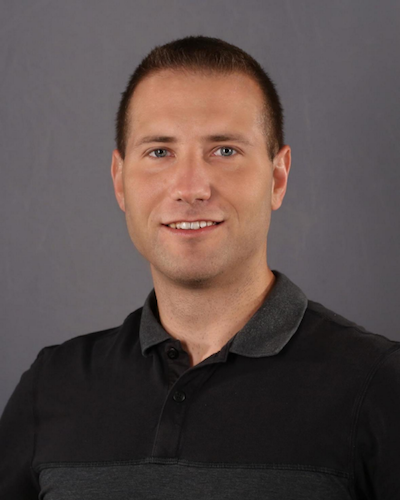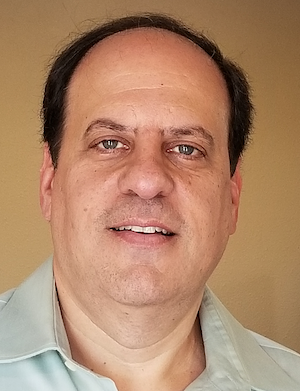Feature Articles
Fax Is Not a Machine, It Is a Technology
 Once more I am listening to a presentation on interoperability. These always get a little uncomfortable - especially in the early going - because I can almost predict where the presenter will go horribly wrong and do a complete disservice to the audience (generally somewhere between slides 3 and 8). This time it was slide 6 where the speaker inserts stock picture of a decrepit old fax machine with paper cascading off a desk and onto the floor. This comes along with the typical lecture on everything that is wrong with "fax". With the lemmings in the audience nodding/snickering along, the speaker proceeds to misinform and mislead the group. Cringe-worthy really. What's misleading? Pretty much everything he says.
Once more I am listening to a presentation on interoperability. These always get a little uncomfortable - especially in the early going - because I can almost predict where the presenter will go horribly wrong and do a complete disservice to the audience (generally somewhere between slides 3 and 8). This time it was slide 6 where the speaker inserts stock picture of a decrepit old fax machine with paper cascading off a desk and onto the floor. This comes along with the typical lecture on everything that is wrong with "fax". With the lemmings in the audience nodding/snickering along, the speaker proceeds to misinform and mislead the group. Cringe-worthy really. What's misleading? Pretty much everything he says.
The Business of Healthcare Is Business
 Hmm, that headline doesn't seem right, does it? I mean, shouldn't the business of healthcare be, well, health? Or, at least, caring? Actually, shouldn't the business of healthcare be patients? After all, everyone in healthcare says it's all about patients. Everyone says they're patient-centered, whatever that means. But think about this: who in healthcare gets paid for you to be healthy? Or, conversely, who in healthcare doesn't get paid when you get sick, or when you don't improve under their care? Whether we planned it or not, whether we admit it or not, or whether we like it or not, our healthcare system is a business that has become about making money.
Hmm, that headline doesn't seem right, does it? I mean, shouldn't the business of healthcare be, well, health? Or, at least, caring? Actually, shouldn't the business of healthcare be patients? After all, everyone in healthcare says it's all about patients. Everyone says they're patient-centered, whatever that means. But think about this: who in healthcare gets paid for you to be healthy? Or, conversely, who in healthcare doesn't get paid when you get sick, or when you don't improve under their care? Whether we planned it or not, whether we admit it or not, or whether we like it or not, our healthcare system is a business that has become about making money.
How Open Source Hardware Increases Cybersecurity
 Hardware hacks are particularly scary because they trump any software security safeguards-for example, they can render all accounts on a server password-less. Fortunately, we can benefit from what the software industry has learned from decades of fighting prolific software hackers: Using open source techniques can, perhaps counterintuitively, make a system more secure. Open source hardware and distributed manufacturing can provide protection from future attacks...security is one of the core benefits of open source. While open source is not inherently more secure, it allows you to verify security yourself (or pay someone more qualified to do so). With closed source programs, you must trust, without verification, that a program works properly.
Hardware hacks are particularly scary because they trump any software security safeguards-for example, they can render all accounts on a server password-less. Fortunately, we can benefit from what the software industry has learned from decades of fighting prolific software hackers: Using open source techniques can, perhaps counterintuitively, make a system more secure. Open source hardware and distributed manufacturing can provide protection from future attacks...security is one of the core benefits of open source. While open source is not inherently more secure, it allows you to verify security yourself (or pay someone more qualified to do so). With closed source programs, you must trust, without verification, that a program works properly.
Open Source Goes Corporate: Can Open Healthcare Be Far Behind?
 If you aren't in IT, you may have missed the news that IBM is acquiring Red Hat, a leader in the open source Linux movement, or that, a couple days prior, Microsoft closed on its acquisition of GitHub, a leader in open source software development. Earlier this year Salesforce acquired Mulesoft, and Cloudera and Hortonworks merged; all were other open source leaders. I must confess, I had never heard of some of these companies, but I'm starting to believe what MarketWatch said following the IBM announcement: "open source has truly arrived." What exactly that means, especially for healthcare, I'm not sure, but it's worth exploring. IBM is paying $34b for Red Hat.
If you aren't in IT, you may have missed the news that IBM is acquiring Red Hat, a leader in the open source Linux movement, or that, a couple days prior, Microsoft closed on its acquisition of GitHub, a leader in open source software development. Earlier this year Salesforce acquired Mulesoft, and Cloudera and Hortonworks merged; all were other open source leaders. I must confess, I had never heard of some of these companies, but I'm starting to believe what MarketWatch said following the IBM announcement: "open source has truly arrived." What exactly that means, especially for healthcare, I'm not sure, but it's worth exploring. IBM is paying $34b for Red Hat.
Imagining a Future American Culture of Health
 One of the most thought-provoking articles I've read lately is Tom Vanderbilt's Why Futurism Has a Cultural Blindspot in Nautilus. In it, he discusses how our technological visions of the future seem to do much better on predicting the technology of that future than they do the culture in which they will be used. As he says, "But when it comes to culture we tend to believe not that the future will be very different than the present day, but that it will be roughly the same. Try to imagine yourself at some future date.... Chances are, that person resembles you now."
One of the most thought-provoking articles I've read lately is Tom Vanderbilt's Why Futurism Has a Cultural Blindspot in Nautilus. In it, he discusses how our technological visions of the future seem to do much better on predicting the technology of that future than they do the culture in which they will be used. As he says, "But when it comes to culture we tend to believe not that the future will be very different than the present day, but that it will be roughly the same. Try to imagine yourself at some future date.... Chances are, that person resembles you now."
Apple Watch Leaves Patients Connected with Nowhere To Go
 The highly anticipated unveiling of the Apple Watch Series 4 caused a news and social media sensation. Apple coined the iconic timepiece as the "guardian of your health", with health tracking functionalities such as the ability to detect atrial fibrillation (AFib) by a self-performed electrocardiogram (ECG). But from patients' and carepartners' perspectives, there is a long road to a universally accessible, seamlessly implemented, mass-adoption, and meaningful use for this wearable technology...Unfortunately, the vast majority of concerns in the public domain haven't emphasized the risks to health due to poor implementation, integration, and adoption strategies of digital tools and wearables.
The highly anticipated unveiling of the Apple Watch Series 4 caused a news and social media sensation. Apple coined the iconic timepiece as the "guardian of your health", with health tracking functionalities such as the ability to detect atrial fibrillation (AFib) by a self-performed electrocardiogram (ECG). But from patients' and carepartners' perspectives, there is a long road to a universally accessible, seamlessly implemented, mass-adoption, and meaningful use for this wearable technology...Unfortunately, the vast majority of concerns in the public domain haven't emphasized the risks to health due to poor implementation, integration, and adoption strategies of digital tools and wearables.
Top 3 Benefits of Company Open Source Programs
 Many organizations, from Red Hat to internet-scale giants like Google and Facebook, have established open source programs (OSPO). The TODO Group, a network of open source program managers, recently performed the first annual survey of corporate open source programs, and it revealed some interesting findings on the actual benefits of open source programs. According to the survey, the top three benefits of managing an open source program are: Awareness of open source usage/dependencies, increased developer agility/speed, better and faster license compliance.
Many organizations, from Red Hat to internet-scale giants like Google and Facebook, have established open source programs (OSPO). The TODO Group, a network of open source program managers, recently performed the first annual survey of corporate open source programs, and it revealed some interesting findings on the actual benefits of open source programs. According to the survey, the top three benefits of managing an open source program are: Awareness of open source usage/dependencies, increased developer agility/speed, better and faster license compliance.
It's Time To Pay The Maintainers
 Earlier this year, Tidelift conducted a survey of over 1,200 professional software developers and open source maintainers. We found that 83% of professional software development teams would be willing to pay for better maintenance, security, and licensing assurances around the open source projects they use. Meanwhile, the same survey found that the majority of open source maintainers receive no external funding for their work, and thus struggle to find the time to maintain their open source projects. So, to put what we learned succinctly...It's time to pay the maintainers. Not just because they deserve to be compensated for their amazing work creating the software infrastructure our society relies on (they do!). But also because there is a ready-made market of professional developers willing to pay for assurances they are in the best position to provide. Here's an idea for how to do it...
Earlier this year, Tidelift conducted a survey of over 1,200 professional software developers and open source maintainers. We found that 83% of professional software development teams would be willing to pay for better maintenance, security, and licensing assurances around the open source projects they use. Meanwhile, the same survey found that the majority of open source maintainers receive no external funding for their work, and thus struggle to find the time to maintain their open source projects. So, to put what we learned succinctly...It's time to pay the maintainers. Not just because they deserve to be compensated for their amazing work creating the software infrastructure our society relies on (they do!). But also because there is a ready-made market of professional developers willing to pay for assurances they are in the best position to provide. Here's an idea for how to do it...
National Biodefense Strategy: Protecting the Nation Against all Biological Threats
 Today, the White House and four federal departments unveiled a comprehensive National Biodefense Strategy to make America safer against modern biological threats to the United States. In the 21st century, biological threats are increasingly complex and dangerous, and that demands that we act with urgency and singular effort to save lives and protect Americans. Whether a natural outbreak, an accidental release, or a deliberate attack, biological threats are among the most serious we face, with the potential for significant health, economic and national security impacts. Therefore, promoting our health security is a national security imperative.
Today, the White House and four federal departments unveiled a comprehensive National Biodefense Strategy to make America safer against modern biological threats to the United States. In the 21st century, biological threats are increasingly complex and dangerous, and that demands that we act with urgency and singular effort to save lives and protect Americans. Whether a natural outbreak, an accidental release, or a deliberate attack, biological threats are among the most serious we face, with the potential for significant health, economic and national security impacts. Therefore, promoting our health security is a national security imperative.
Is China Already in the 21st Century in the Fields of AI for Healthcare and Quantum Computing?
 It is 2018 everywhere, but not every country is treating being in the 21st century equally. China is rushing into it, even in healthcare, while the United States is tip-toeing its way towards the future. Especially in healthcare. Ready or not, the future is here...and the U.S. may not be ready...Artificial Intelligence: Yes, the U.S. has been the leader in A.I., with some of the leading universities and tech companies working on it. That may not be enough. A year ago China announced that it intended to be the world leader in A.I. by 2025. The Next Web recently concluded that China's progress since then "remains unchecked." China is far outspending the U.S. on A.I. research and infrastructure, coordinating efforts between government, research institutes, universities, and private companies. Dr. Steven White, a professor at China's Tsinghua University, "likens the country's succeed at all costs AI program to Russia's Sputnik moment." We have yet to have that wake-up call...
It is 2018 everywhere, but not every country is treating being in the 21st century equally. China is rushing into it, even in healthcare, while the United States is tip-toeing its way towards the future. Especially in healthcare. Ready or not, the future is here...and the U.S. may not be ready...Artificial Intelligence: Yes, the U.S. has been the leader in A.I., with some of the leading universities and tech companies working on it. That may not be enough. A year ago China announced that it intended to be the world leader in A.I. by 2025. The Next Web recently concluded that China's progress since then "remains unchecked." China is far outspending the U.S. on A.I. research and infrastructure, coordinating efforts between government, research institutes, universities, and private companies. Dr. Steven White, a professor at China's Tsinghua University, "likens the country's succeed at all costs AI program to Russia's Sputnik moment." We have yet to have that wake-up call...
The (Awesome) Economics of Open Source
 Successful open source software companies "discover" markets where transaction costs far outweigh all other costs, outcompete the proprietary alternatives for all the good reasons that even the economic nay-sayers already concede (e.g., open source is simply a better development model to create and maintain higher-quality, more rapidly innovative software than the finite limits of proprietary software), and then-and this is the important bit-help clients achieve strategic objectives using open source as a platform for their own innovation. With open source, better/faster/cheaper by itself is available for the low, low price of zero dollars. As an open source company, we don't cry about that. Instead, we look at how open source might create a new inflection point that fundamentally changes the economics of existing markets or how it might create entirely new and more valuable markets.
Successful open source software companies "discover" markets where transaction costs far outweigh all other costs, outcompete the proprietary alternatives for all the good reasons that even the economic nay-sayers already concede (e.g., open source is simply a better development model to create and maintain higher-quality, more rapidly innovative software than the finite limits of proprietary software), and then-and this is the important bit-help clients achieve strategic objectives using open source as a platform for their own innovation. With open source, better/faster/cheaper by itself is available for the low, low price of zero dollars. As an open source company, we don't cry about that. Instead, we look at how open source might create a new inflection point that fundamentally changes the economics of existing markets or how it might create entirely new and more valuable markets.
ONC EHR Reporting Program RFI: A Public Health Perspective
 On August 24, 2018, the Office of the National Coordinator for Health Information Technology (ONC) released a Request for Information (RFI) related to the EHR Reporting Program. This RFI is required by the 21st Century Cures Act and its primary purpose is to gather ideas and suggestions related to how ONC might provide better information about Certified EHR Technology (CEHRT). Apparently, the initial intention was to create a "star rating" like the type used in Consumer Reports to use to rate EHRs, but that seems to have been abandoned in favor of some kind of measurement system. But it is far from clear exactly how this would be done.
On August 24, 2018, the Office of the National Coordinator for Health Information Technology (ONC) released a Request for Information (RFI) related to the EHR Reporting Program. This RFI is required by the 21st Century Cures Act and its primary purpose is to gather ideas and suggestions related to how ONC might provide better information about Certified EHR Technology (CEHRT). Apparently, the initial intention was to create a "star rating" like the type used in Consumer Reports to use to rate EHRs, but that seems to have been abandoned in favor of some kind of measurement system. But it is far from clear exactly how this would be done.
CMS Promoting Interoperability Program: A Public Health Perspective
 Well, here we go again. The Centers for Medicare and Medicaid Services (CMS) has now released a new Notice of Proposed Rulemaking (NPRM), titled Medicare Program; Revisions to Payment Policies under the Physician Fee Schedule and Other Revisions to Part B for CY 2019; Medicare Shared Savings Program Requirements; Quality Payment Program; and Medicaid Promoting Interoperability Program...As this NPRM was released, the CMS Administrator, Seema Verma, published an open letter to doctors which is focused on reducing the burden on doctors so they can spend more time with physicians. HL7 has begun a similar initiative on reducing clinical burden. So the key question is: Does this NPRM go far enough to reduce provider burden in the spirit of Dr. Verma's letter?
Well, here we go again. The Centers for Medicare and Medicaid Services (CMS) has now released a new Notice of Proposed Rulemaking (NPRM), titled Medicare Program; Revisions to Payment Policies under the Physician Fee Schedule and Other Revisions to Part B for CY 2019; Medicare Shared Savings Program Requirements; Quality Payment Program; and Medicaid Promoting Interoperability Program...As this NPRM was released, the CMS Administrator, Seema Verma, published an open letter to doctors which is focused on reducing the burden on doctors so they can spend more time with physicians. HL7 has begun a similar initiative on reducing clinical burden. So the key question is: Does this NPRM go far enough to reduce provider burden in the spirit of Dr. Verma's letter?
A (Real-World) Tale of 6 Practices and 5 EMRs
 We've all been there. Someone in our family (or ourselves) has a medical concern so schedules a primary care visit, gets some images or lab tests, and perhaps learns that surgery is needed. What starts as a fairly simple process can quickly turn into a near-comedy of inefficiency. My own recent story is typical...I invite you to learn how careMESH can take my above experience and make it all digital. We have exceptional knowledge workers in the healthcare industry and had any of the six medical groups in my story asked for a rating of their service, I would have given every one of them a 5 out of 5. They were all excellent, professional, timely, dedicated people and teams. So, let's empower them to communicate.
We've all been there. Someone in our family (or ourselves) has a medical concern so schedules a primary care visit, gets some images or lab tests, and perhaps learns that surgery is needed. What starts as a fairly simple process can quickly turn into a near-comedy of inefficiency. My own recent story is typical...I invite you to learn how careMESH can take my above experience and make it all digital. We have exceptional knowledge workers in the healthcare industry and had any of the six medical groups in my story asked for a rating of their service, I would have given every one of them a 5 out of 5. They were all excellent, professional, timely, dedicated people and teams. So, let's empower them to communicate.
What Burning Man Can Teach Healthcare
 Oh, good: it's Burning Man week. For some people, it's the highlight of the year, an expression of creativity, community, and freedom unlike any other. It's Woodstock, Fashion Week, and the Fringe Festival all rolled together, only set in the Nevada desert. For others, it is 70,000 wannabe hippies/hipsters gathering together for a week of hard partying: public nudity, drugs, and sex, plus burning some "art." Either way, it couldn't possibly have anything to teach healthcare, right? Maybe. But what many do not realize is that Burning Man espouses ten guiding principles, and it is worth taking a look at those and how they could or should be applied to healthcare.
Oh, good: it's Burning Man week. For some people, it's the highlight of the year, an expression of creativity, community, and freedom unlike any other. It's Woodstock, Fashion Week, and the Fringe Festival all rolled together, only set in the Nevada desert. For others, it is 70,000 wannabe hippies/hipsters gathering together for a week of hard partying: public nudity, drugs, and sex, plus burning some "art." Either way, it couldn't possibly have anything to teach healthcare, right? Maybe. But what many do not realize is that Burning Man espouses ten guiding principles, and it is worth taking a look at those and how they could or should be applied to healthcare.